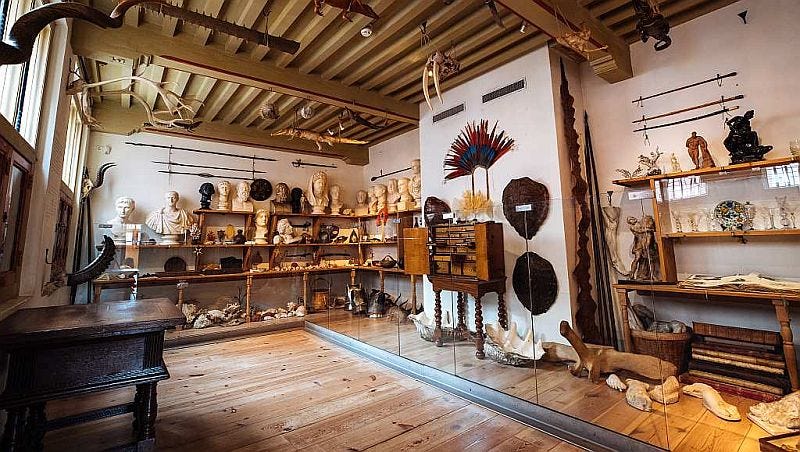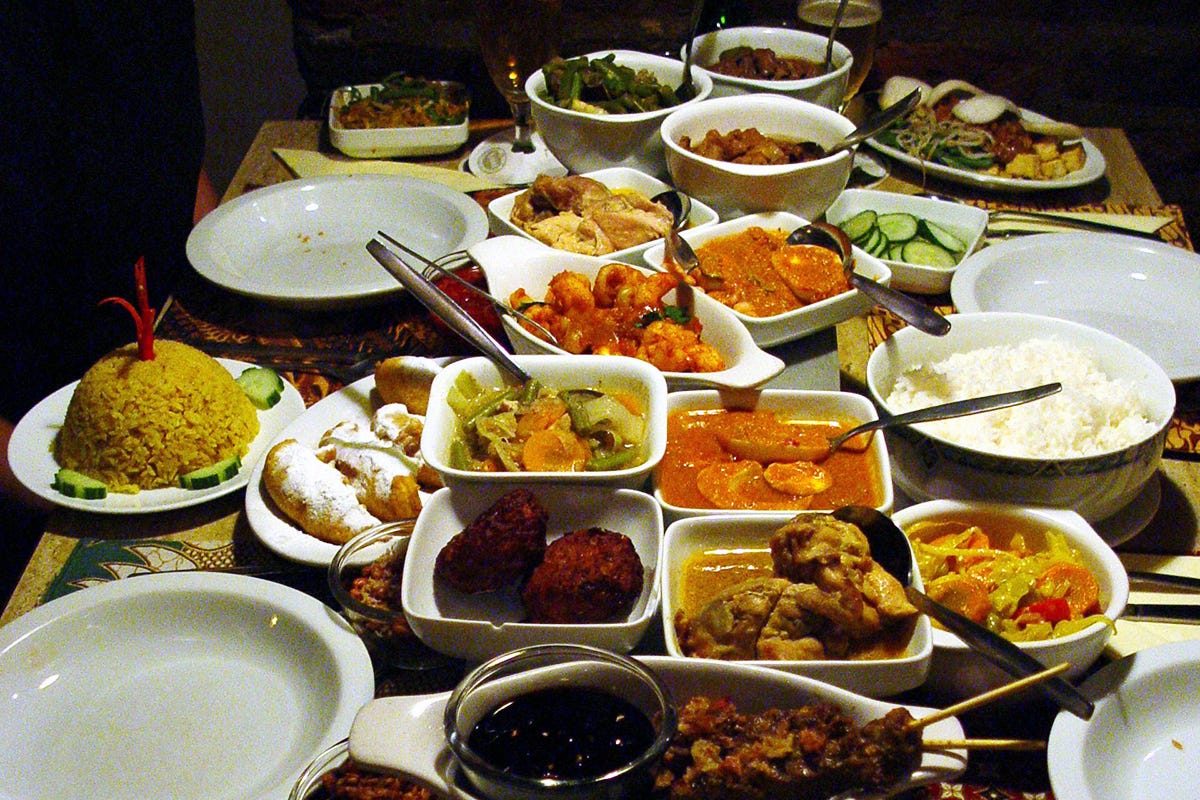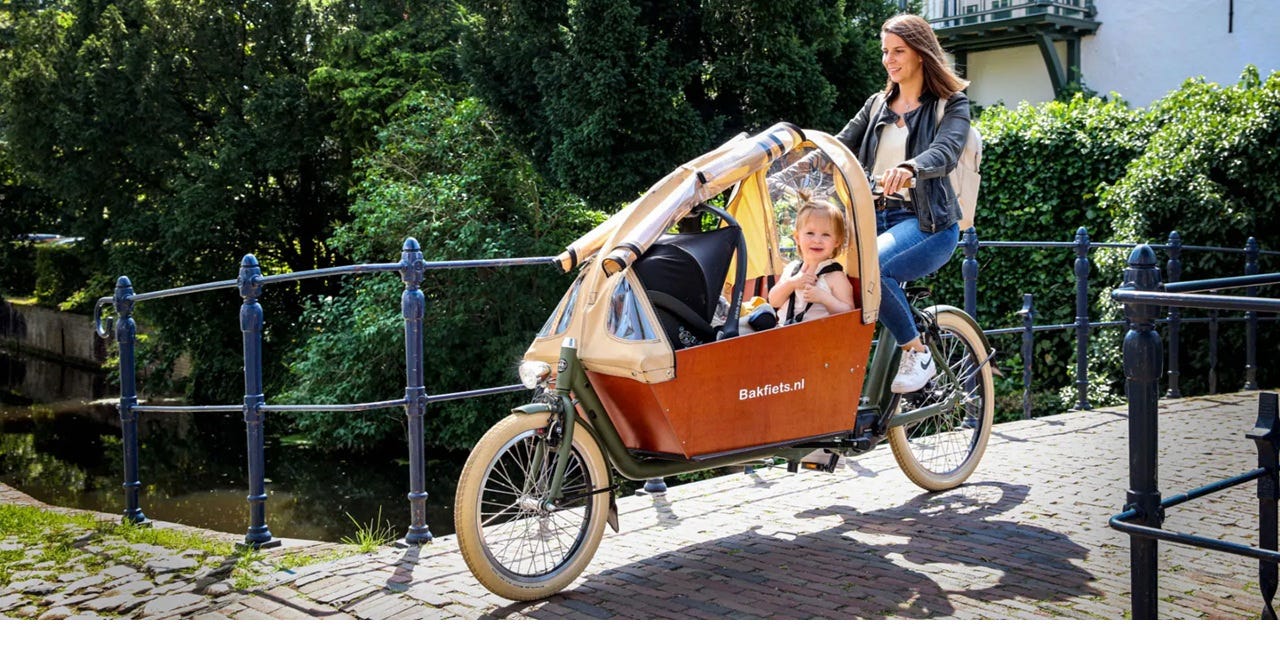Cabinet of Memories: Amsterdam and I
Stories of a City That Changed How I See the World
The room captivated me instantly, unlike any space I had ever encountered. My eyes darted everywhere at once, each surface covered in fascinating objects. Some things I recognized, some I had heard of but never seen, and others were completely unfamiliar wonders. When I first stepped into Rembrandt's Wunderkammer in 1983, it became one of the most eye-opening moments of my life.
I had grown up in Ireland, and this was my first trip abroad. Thirty or forty of us schoolboys boarded the bus that drove onto the ferry at Dun Laoghaire and across England in the middle of the night. We had consumed the sandwiches our mothers had packed and depleted our Lucozade supplies before embarking on another ferry to Ostend, Belgium.
This journey exceeded all my previous adventures. Everywhere we went, the landscape of difference unfolded before me. The language, the food, the architecture, it was immediately clear that the rhythms and patterns of life here were entirely unlike home.
Our destination that day was Rembrandt's house on Jodenbreestraat in Amsterdam. When I walked through the door into the Wunderkammer, or "Cabinet of Curiosities," my imagination ignited immediately. These collections, which originated in Renaissance Europe during the 16th century, were rooms filled with extraordinary objects showcasing both natural wonders and human ingenuity. As I wandered through Rembrandt's personal museum collection, I felt a deep connection to his curiosity.
The stories these objects told of distant lands and scientific discoveries transformed my perspective on the world. One moment I'd be examining an exotic seashell, the next a scientific instrument whose purpose I couldn't fathom. Each object invited questions, making the room not just a collection of things but a catalyst for wonder.
Rembrandt had lived here for 18 years and had been prosperous enough to accumulate these items as both a stimulus for his creativity and a display of his status. He went bankrupt in 1656, after which the entire contents were inventoried and sold off. This detailed inventory later proved crucial to restoring the Wunderkammer to its former glory.
The town where I grew up has a canal, but it has always been a quiet backwater, still one of my favorite places to walk when I return to Ireland. In Amsterdam, however, the canals weren't decorative afterthoughts but the lifeblood of the city, integral to its commerce and character.
As I learned during our tour, the center of Amsterdam consists of concentric canals, each representing a different era in the city's development. The houses lining them stood tall and narrow with distinctive scalloped rooflines. Crowning each was a hook beam—a crane-like structure still used today to move larger items into and out of the narrow buildings, an ingenious solution to their unique architecture.
Gliding along these waterways on a glass-topped tour boat transformed my understanding of the city. The guide explained how the most significant expansion of Amsterdam's canals occurred during the Dutch Golden Age in the 17th century, when city planners devised the "Grachtengordel" plan. This created three main canals, Herengracht, Keizersgracht, and Prinsengracht, arranged in concentric arcs around the old city center. These weren't merely picturesque features but sophisticated systems for transportation, defense, and water management.
Seeing Amsterdam from the water changed everything for me. I've since come to appreciate that viewing any place from its waterways provides a completely different perspective. So many cities developed around rivers and harbors not by accident but because these waterways offered advantages that made trade possible and communities flourish.
Amsterdam engages all the senses. Walking through the flower market, where tulips of every imaginable color were displayed in riotous profusion, I was overwhelmed by their collective beauty and fragrance. The aroma of fresh flowers mingled with the scent of waffles and stroopwafels from nearby vendors, creating an unforgettable experience that I can almost conjure even now, decades later.
The Van Gogh Museum presented the artist's story in a way that rendered him the most human of artists to me. His style evolved through joy and struggle. The vibrant colors and bold brushstrokes of his canvases seemed to vibrate with energy in person.
Perhaps most affecting was Anne Frank's House. Walking through those rooms where she and her family hid during the darkest days of World War II, I felt a coldness in the air. The cramped quarters, the blacked-out windows, the bookcase that concealed the entrance—these formed the setting of a young girl's truncated life. I remember standing in silence, imagining the care they took with each footstep, the routine of enforced quiet, the constant fear of discovery.
Amsterdam has remained one of my favorite cities. It can be overrun with tourists at certain times of the year, but it's populated by people who strike me as both practical and open-minded. The city carries layers of history, some of it very grim, but also maintains a forward-thinking attitude that I find refreshing.
My first business trip was to the Netherlands. My contact from the IT department of a bank in Rotterdam invited me to dinner in the World Trade Center, a dramatic glass and steel structure that epitomized the city's sleek, modern high-rises. As the elevator whisked us up, my ears popped, and then the doors opened to reveal a panoramic view that stole my breath: Rotterdam's illuminated harbor stretching below us, container ships moving like glowing toys in the distance, and the iconic Erasmus Bridge being built over the Maas River.
The restaurant itself was floor-to-ceiling windows that made diners feel suspended in the night sky. My host, Jan ordered something I had not heard of —rijsttafel, literally "rice table," a Dutch-Indonesian specialty. Dozens of small dishes arrived in perfectly choreographed succession, each representing different Indonesian flavors and techniques.
I sampled spicy sambals that made my eyes water, tender rendang that melted on my tongue, sweet-sour acar pickles, and fragrant coconut-infused vegetables. With each tiny porcelain bowl came new sensations, crunchy, creamy, fiery, soothing, a harmony of contrasts. The food was mind-blowing, I had not grown up with spicy food. As I looked down on the rebuilt city that had risen from the ashes of World War II, I realized how travel for work could widen my world.
I would travel to Rotterdam again a number of times and become comfortable getting around the Netherlands. The train system is great and easy to navigate. I would tack on a few days after my work in Rotterdam and take the train to Amsterdam.
Years after my schoolboy visit, I returned to Amsterdam as an adult and discovered another facet of its progressive character—the pragmatic approach to cannabis. While other nations debated prohibition, Amsterdam had long since moved toward regulated tolerance through its coffeeshops. These weren't merely places to purchase cannabis, but social spaces with their own distinct atmospheres. I found myself drawn to a place called The Grey Area, with its Roswell-themed décor, run by Americans. These were the first Americans other than my cousins I had ever spoken with—an education in itself. It was a small establishment with worn leather couches and jazz playing softly in the background.
Over subsequent visits, it became a place where I could sit by the window watching bicyclists stream past, nursing a raspberry tea with honey and enjoying a perfectly rolled joint while contemplating plans for life. The coffeeshop's regulars, a mix of locals, expatriates, and travelers, created a community that felt both temporary and timeless. There was something profoundly honest about the laid-back atmosphere, where conversations flowed easily between strangers sharing a joint. A visit to a coffeeshop in the evening became a regular facet of my visits.
Bicycles became my transportation, providing another equally authentic experience in Amsterdam. Renting a bike from a shop near Centraal Station, I joined the river of cyclists flowing through dedicated lanes throughout the city. What impressed me most was how the entire urban environment had been designed with cyclists in mind. The traffic lights for bicyclists, small, eye-level signals featuring illuminated bicycle silhouettes, operated independently from car traffic, giving two-wheeled travelers priority at many intersections.
Pedaling beyond the tourist-heavy center, I found myself in residential neighborhoods. locals carried seemingly impossible loads on their bikes, groceries, children and even furniture. The creative cargo and kid carrying bikes were a fascinating glimpse into a different way of living. Beyond the suburbs the flat landscape made cycling effortless, cycling paths led through farmlands where windmills still swirled in lazy circles.
The Rijksmuseum housed works by Dutch masters. Standing before Rembrandt's "Night Watch," I was captivated by details on faces painted centuries ago yet still so alive. The play of light and the sense of movement remain magnificent beyond words.
The Tropenmuseum opened my eyes to other cultures in unexpected ways. During my first visit, they displayed a Mongolian yurt, set up indoors where visitors could enter and experience it. Touching the felt walls and ornate wooden supports, I realized how differently people lived across the globe. Only years later did I come to understand the complex history of Dutch colonialism that had brought many of these artifacts to Amsterdam, adding another layer to the city's story that I continue to reckon with.
Amsterdam is known for its nightlife. After dark, the streets took on a different character—café windows glowed with warm light, laughter spilled from doorways, and music drifted from venues tucked away on side streets. I remember attending a comedy show where the audience was a mix of tourists and locals, all laughing together despite language differences, a moment of connection.
One evening, curiosity led me through the Red Light District—De Wallen—an area as much a part of Amsterdam's identity as its canals and museums. The famous red-lit windows lined narrow medieval streets, where women in lingerie stood or sat behind glass, looking bored or tired. They barely glanced up as equally bored-looking men shuffled past, hands in pockets, neither party seeming to find what they were seeking. It felt mechanical and jarring to see historic 14th-century architecture housing the world's oldest profession, now sanitized and regulated.
Walking out of the district, past the same old church that had witnessed centuries of this commerce, I found myself contemplating how cities contain humanity intensified.
My father never quite understood my fascination with Amsterdam. When I announced my second solo trip there in a year, he cornered me in the kitchen, teacup in hand. "What's the real reason you keep going back to that place?" he demanded, his accent thickening as it always did when he was working himself up.
Before I could answer, he leaned in conspiratorially. "Is it the prostitutes?" The question shocked me as my mother's head whipped around from the sink. I nearly choked on my toast. "Dad! No! It's not the prostitutes!"
He waved his hand dismissively. "Well, just because it's legal doesn't mean it's OK. You could catch something you know."
I tried explaining about the rijsttafel, the bicycle culture, the art scene, but he remained unconvinced. "Just remember you could catch something," he continued, warming to his theme as my mother rolled her eyes behind him.
He sipped his tea with the satisfaction of a case well made. I didn't have the courage to tell him about the coffeeshops. Somethings are best left unsaid.
Each visit to Amsterdam has expanded my horizons. The city's blend of old and new, tradition and innovation, continually draws me back. From that first wide-eyed encounter with Rembrandt's Wunderkammer to my many returns since, it remains a true cabinet of curiosities that continues to shape my view of the world.





Where you discovered your love for traveling!